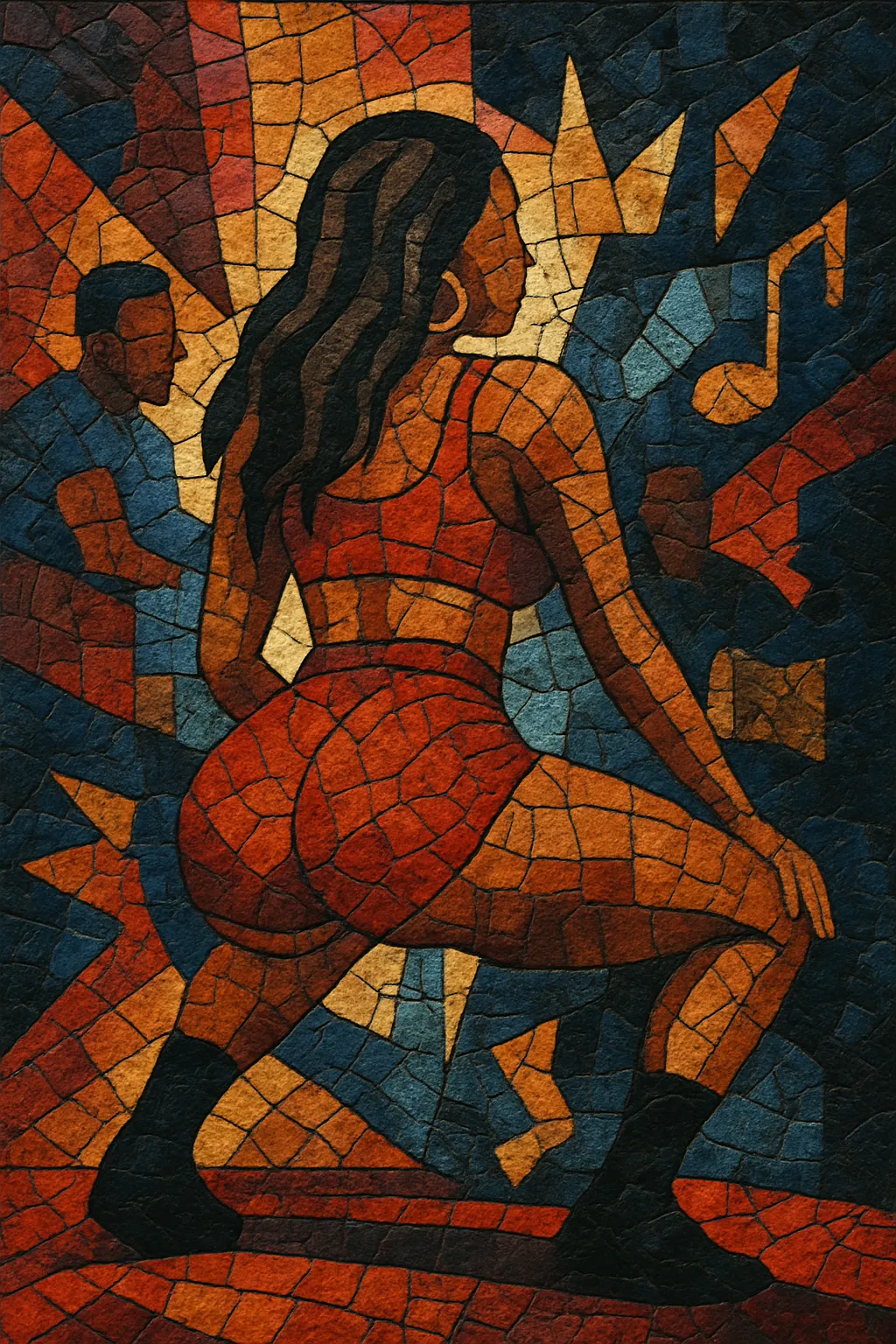Twerk is a club-focused bass music style centered around 95–105 BPM grooves, half-time drum patterns, and heavy 808 sub-bass. It emphasizes body-centric, low-end movement and space, leaving room for the iconic twerking dance that gave the style its name.
The genre inherits the call-and-response party energy and chant-like vocals of New Orleans bounce and Southern hip hop, then refines it with EDM-style builds, drops, and sound design. Production typically features a snare or clap on beat 3 (half-time feel), sparse but punchy kick patterns, syncopated percussion, brass/synth stabs, and vocal chops or commands that cue the dancefloor. The result is high-impact, bass-forward music designed for big speakers and crowd participation.
Twerk’s rhythmic DNA traces back to New Orleans bounce in the 1990s, where call-and-response party chants, 808s, and dance-led performance culture normalized the twerking dance itself. Through the 2000s, Southern hip hop, crunk, and Miami bass amplified the focus on booming low end, simple hooks, and explicit dance commands, laying a foundation for a future, more codified club sound.
Around the early 2010s, EDM and trap producers began exploring mid-tempo (≈100 BPM) drops that emphasized half-time snares, chest-rattling 808s, brass stabs, and vocal hype lines. Labels and curators started tagging these tracks as “twerk,” distinguishing them from faster trap and 128 BPM electro. Artists and collectives popularized twerk edits, DJ tools, and festival-ready anthems, solidifying the aesthetic—minimalist drum grids, generous sub-bass, and chant-driven drops.
Viral dance moments, pop crossovers, and high-profile DJ sets pushed the term and sound into wider consciousness. While the dance itself garnered mainstream media attention, the music scene around it matured in parallel: bootlegs, VIPs, and collaborations connected EDM, Southern rap, and Latin club lanes, keeping the sound flexible and DJ-friendly.
Twerk’s mid-tempo bass framework blended easily with moombahton, Brazilian funk, and broader trap-EDM, spawning hybrid tracks that retained the half-time thump while adopting regional rhythms and samples. The genre now functions as a dependable “energy pocket” in DJ sets—bridging faster and slower tempos—while continuing to evolve with new sound design, percussive ideas, and vocal treatments.



